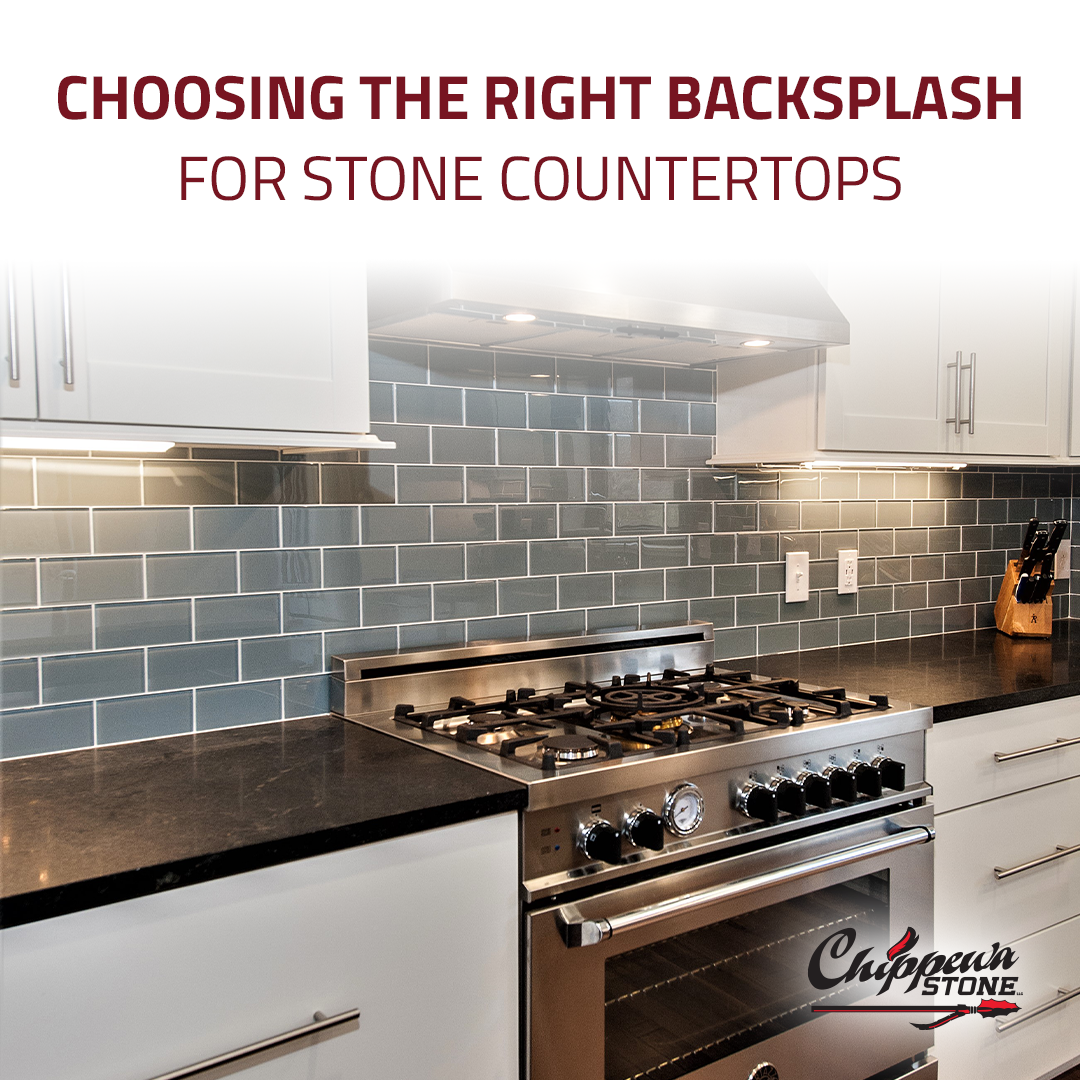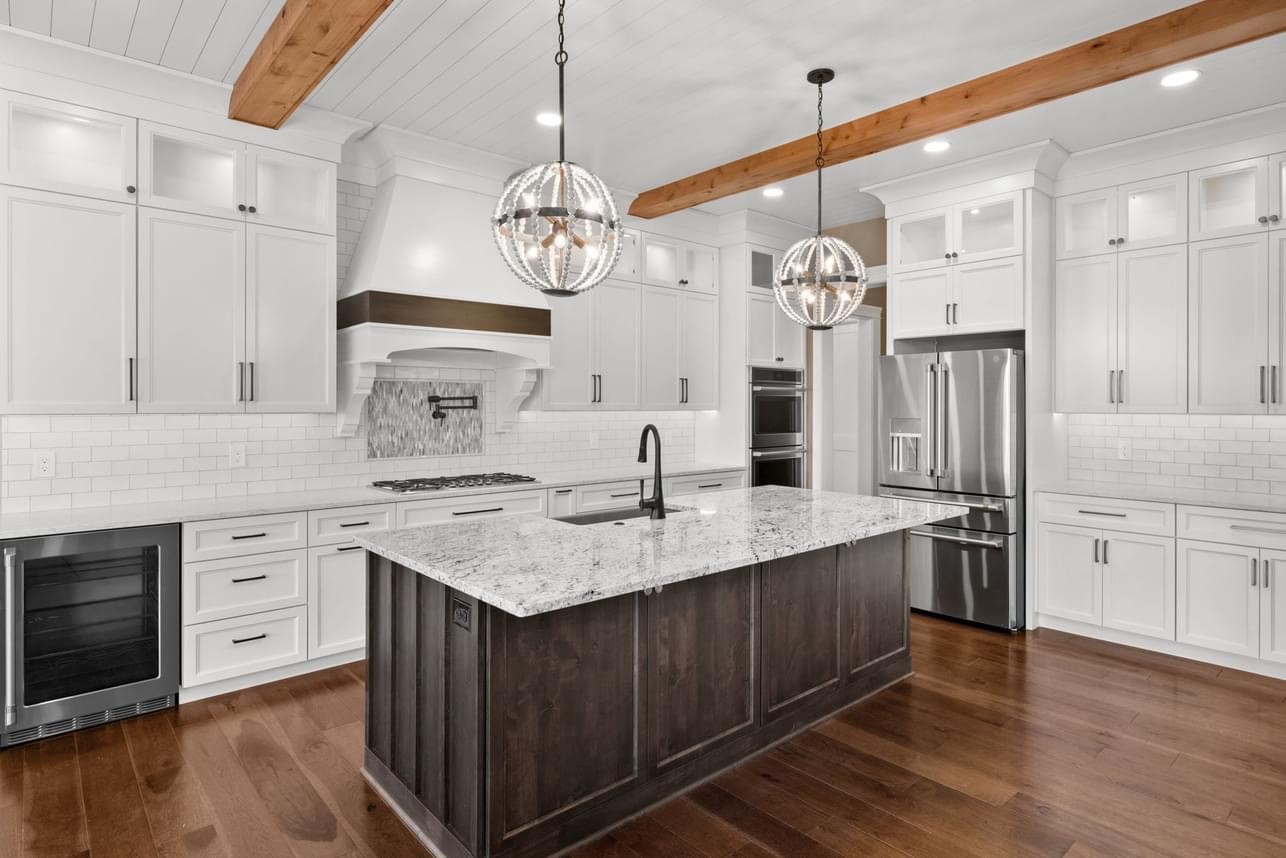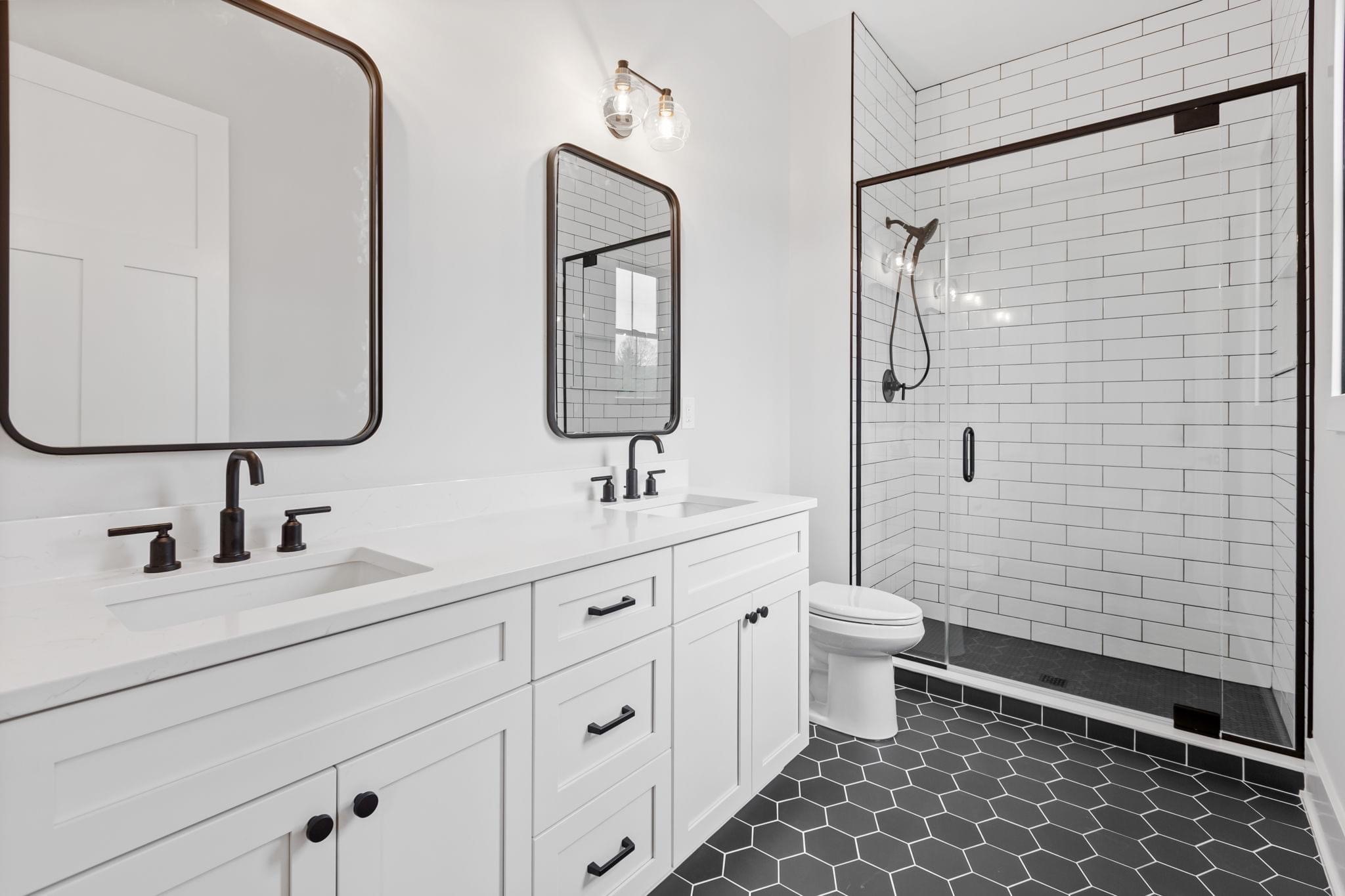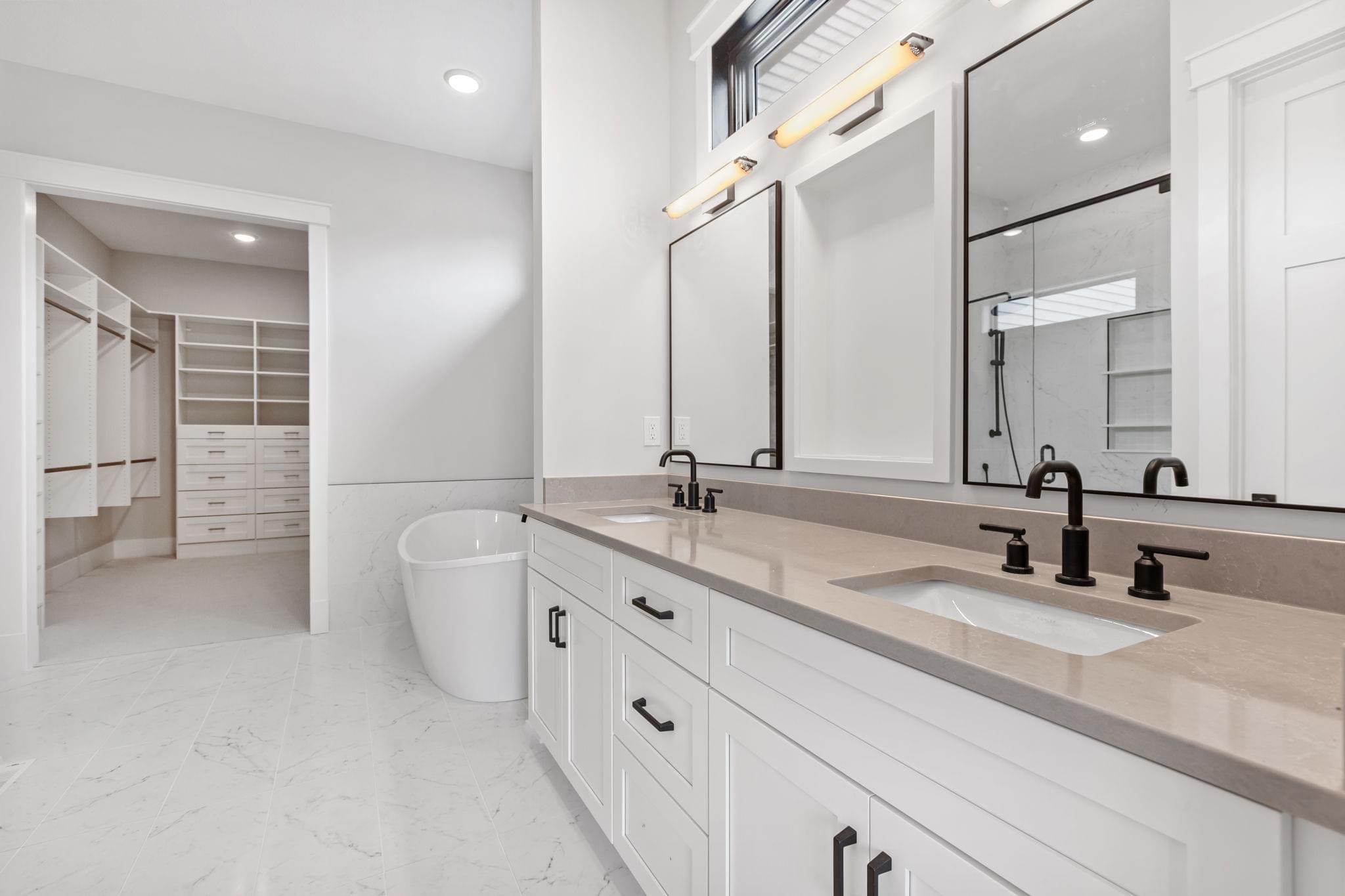Your kitchen countertop is one of the most impactful design choices in your home. Adding the right backsplash can elevate it further, bringing out the beauty and function of your stone countertop and creating a unified look for the entire kitchen. However, with the vast variety of materials, colors, and styles available, choosing the perfect backsplash can be a daunting task.
In this guide, we’ll help you navigate the key factors to consider when pairing backsplashes with stone countertops, discuss popular materials and styles, and provide inspiration to make your design decisions easier. Whether your countertop is granite, quartz, marble, or soapstone, this blog will give you the insight you need to make the best choice.
1. Consider the Countertop Material
Every stone countertop has a unique look and set of characteristics that influence the backsplash choices that complement it. Here are some pairing tips for common countertop materials:
- Granite: With its natural patterns and variety of colors, granite pairs well with simple, monochromatic backsplashes to avoid visual overwhelm. Subway tiles, especially in neutral colors, are a popular option.
- Quartz: Quartz countertops come in an array of styles, from marble-like designs to more solid colors. Since quartz is a non-porous, low-maintenance material, pairing it with a textured or patterned backsplash can add dimension and interest to your kitchen.
- Marble: Marble’s soft, elegant veining looks stunning with a clean, understated backsplash. Consider glass tiles, white subway tiles, or even a marble slab in the same color to create a continuous, luxurious look.
- Soapstone: Soapstone’s matte finish and deep color tones pair well with both light and dark backsplashes. You might consider a simple white or light gray subway tile for contrast or a matching soapstone slab for a seamless look.
2. Define Your Style Goals
The backsplash you choose should not only suit your countertop but also reflect the overall aesthetic of your kitchen. Ask yourself the following questions to help define your goals:
- Modern or Traditional? Sleek, glass, or large-format tiles create a modern look, while subway tiles or natural stone tiles tend to complement traditional or farmhouse designs.
- Bold or Subdued? If you want your backsplash to stand out, choose a contrasting color or a unique texture. For a more cohesive look, select a color similar to your countertop.
- High or Low Maintenance? Materials like glass and glazed ceramic are easier to clean, making them good choices for busy kitchens, while natural stone backsplashes may require regular sealing to maintain their appearance.
When you have a clear idea of your style, it becomes easier to choose materials and colors that support that vision.
3. Popular Backsplash Materials and Their Characteristics
Now that you have a sense of your design goals and countertop material, it’s time to consider backsplash materials. Here’s a look at some popular options and how they work with stone countertops:
- Ceramic and Porcelain Tiles: These tiles are incredibly versatile, available in a vast range of colors, shapes, and finishes. They’re also highly durable and easy to clean, making them ideal for high-traffic kitchens. They work well with all stone types, as you can select simple colors or patterns that complement your countertop without overpowering it.
- Glass Tiles: Glass tiles have a sleek, reflective surface that can brighten up your kitchen. They work particularly well with darker stone countertops like granite or soapstone, adding a subtle shine that contrasts beautifully with the stone’s matte finish. Glass is also easy to clean, though fingerprints and water spots are more visible.
- Natural Stone Tiles: If you want a cohesive look, consider using natural stone tiles as a backsplash. This can include marble, travertine, or even a different type of granite that complements your countertop. Keep in mind, however, that natural stone backsplashes require more maintenance, as they’re porous and need regular sealing.
- Metal Tiles: Stainless steel or brushed metal tiles add an industrial feel to kitchens, perfect for modern designs. Metal backsplashes work best with simpler stone countertops, like solid-colored quartz, as the metallic sheen can compete with busier patterns.
- Subway Tiles: Classic and timeless, subway tiles are a versatile choice that works in almost any kitchen. They come in various colors, allowing you to match or contrast with your stone countertops. White subway tiles are particularly popular, as they provide a clean, crisp backdrop without distracting from the countertop.
- Mosaic Tiles: For a unique, artistic touch, mosaic tiles allow for custom patterns and can incorporate multiple colors. They work well with solid or subtly veined stone countertops, as too much pattern on both surfaces can create a visually busy space.
- Solid Slab Backsplash: If you prefer a seamless look, using the same stone as your countertop for the backsplash creates a continuous, elegant appearance. This approach works especially well with marble and granite. It’s also low-maintenance since there are fewer grout lines.
4. Choosing Colors and Patterns
The color and pattern of your backsplash play a crucial role in achieving a cohesive look. Here are some guidelines to consider:
- Color Matching: For a seamless look, match the color of your backsplash to one of the colors in your stone countertop. For example, if your granite has gray veining, a gray backsplash can tie the look together.
- Contrast for Interest: If your countertop is light, a darker backsplash can create a striking contrast, and vice versa. For example, pairing a white marble countertop with a deep navy or charcoal subway tile adds depth to your kitchen.
- Neutral Tones: Neutral backsplashes work well with any stone countertop and create a timeless appeal. Consider soft grays, whites, or beige tones for an elegant look that won’t go out of style.
- Geometric Patterns: Patterns such as herringbone or hexagon add texture and interest without overwhelming the design. Choose a simple color palette to keep the look balanced.
5. Consider Maintenance Requirements
Maintenance is an essential factor when choosing a backsplash. Here’s a quick guide to the maintenance needs of popular backsplash materials:
- Ceramic and Porcelain: These are highly resistant to stains and easy to clean. Regular wiping with a damp cloth keeps them looking fresh.
- Glass: Glass tiles resist stains and are simple to clean, but they do show fingerprints and water spots more readily.
- Natural Stone: Stone tiles require sealing to prevent staining and etching. They’re more porous, so spills should be wiped up immediately.
- Metal: Metal tiles are durable but can show water spots and fingerprints. They’re easy to clean with mild soap and water.
- Mosaic: Mosaic tiles with a textured or uneven surface can trap dirt and require more attention during cleaning.
Choosing a low-maintenance material can make life easier, especially in a busy kitchen where spills and splashes are common.
6. Tips for Seamless Installation
Once you’ve chosen your backsplash, ensure a smooth installation process with these tips:
- Measure Carefully: Before purchasing tiles, measure the area where you plan to install the backsplash to determine the right amount of material.
- Work with Professionals: Especially for stone or intricate patterns, hiring a professional ensures that your backsplash is installed with precision.
- Consider Grout Color: The color of the grout can impact the look of the backsplash. A contrasting grout color will highlight the pattern, while a matching color will create a more seamless look.
- Account for Outlets: Plan around any outlets or switches, as they will impact the layout of the tiles. Using outlet covers that match the backsplash color can create a cleaner look.
7. Finding Inspiration for Your Kitchen
If you’re still not sure which direction to go, here are some popular design inspirations to get you started:
- Classic White on White: Pair a white marble countertop with white subway tiles for a timeless, elegant look.
- Dark Drama: For soapstone or black granite countertops, try a dark tile or solid stone slab for a sophisticated, dramatic effect.
- Textured Neutrals: A textured ceramic tile in beige or soft gray adds interest to a neutral kitchen without overpowering the stone.
- Bold and Colorful: For a vibrant look, consider a colorful mosaic that highlights a subtle color in your countertop, like blue or green.
- Metallic Accents: Metallic or glass tiles can add a contemporary feel when paired with solid-colored countertops.
Choosing the right backsplash for your stone countertop is all about balance—finding a design that complements the beauty of your countertop without overwhelming it. With a vast selection of materials, colors, and patterns available, you can create a backsplash that reflects your personal style and enhances the functionality of your kitchen.
At Chippewa Stone, we’re here to help you every step of the way. If you’re ready to pair your stone countertops with a stunning backsplash, reach out to us today for expert advice and high-quality materials that bring your dream kitchen to life.








